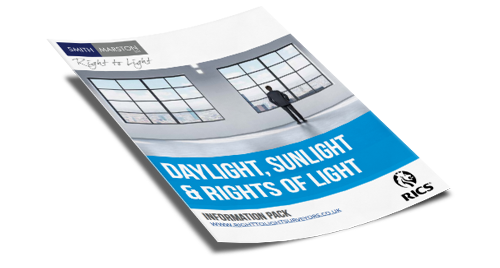In the current rapidly evolving property development landscape, comprehending the nuances of right to light is becoming more and more essential. As urban spaces grow denser and competition for valuable land intensifies, ensuring ample light access for new and existing buildings can significantly impact both project viability and legal standing. A right to light survey is not just a precaution; it is a necessary step for developers to manage potential disputes and enhance the value of their projects.
Right to light surveys provide a thorough assessment of how proposed developments may affect natural light access for surrounding properties. These surveys are rooted in a intricate legal framework that dates back centuries, shaping modern planning and development decisions. As we delve into the different facets of right to light, from its history to its consequences for planning permissions, it becomes clear that developers must grasp these rights to reduce risks and create cohesive living environments.
Comprehending Right to Light
The Right to Light is a juridical notion that enables landowners to experience natural light in their buildings. This right is derived from common law and is particularly relevant in highly populated city environments where taller structures can impede light access. Typically, a property owner has the right to access light through defined apertures, such as openings, that have enjoyed consistent daylight for a specific period, usually two decades.
Knowing your legal rights related to light is crucial, especially for constructors and residential owners alike. The consequences of obstructing a neighbor's light can lead to serious legal disputes, which may stall or terminate construction projects. Knowing the thresholds and guidelines for what constitutes a right to light can help avoid unnecessary conflicts and costs.
In the context of property development, the importance of considering the Right to Light cannot be undervalued. Planning permission does not necessarily account for light rights, and neglect to address them can result in costly modifications or even the refusal of proposed developments. Engaging in a light rights survey early in the planning process ensures that all pertinent factors are considered into account, ultimately leading to more efficient project execution and stronger relationships with adjacent properties.
Legal Framework and Conformity

The right to light is a legal entitlement that can substantially impact real estate development. It is primarily governed by common law and legislative provisions, particularly stemming from the UK Prescription Act of 1832. This act establishes the principles under which individuals can acquire rights to light through continuous use over a specified period, typically twenty years. Grasping this structure is essential for developers to navigate potential disputes and ensure compliance with existing rights held by neighboring properties.
Compliance with legal regulations is paramount during the planning and development phase. Developers must be mindful of both the legal rights of their neighbors and the implications of their own development plans. Planning permission is distinct from right to light considerations; thus, obtaining planning approval does not guarantee that the development won't infringe upon anyone's right to light. Right To Light Aldwych to recognize these distinctions can lead to financially draining legal disputes and possible project delays.
Consulting a right to light expert during the project lifecycle can help reduce risks associated with these legal rights. Through detailed assessments and surveys, developers can more effectively understand existing light rights and spot potential issues early on. This proactive approach not only aids in compliance with legal requirements but also promotes positive relations with adjacents, ultimately leading to smoother project execution.
Surveying Techniques and Optimal Strategies
Carrying out a Right to Light survey necessitates a methodical approach to verify precise results and compliance with regulatory standards. First, a site visit is vital to assess the property and its surroundings. During this visit, surveyors assess existing light conditions, adjacent structures, and evaluate potential obstructions that could impact light access. This preliminary observation aids in establishing the foundation for daylight levels and understanding the context of the development project.
After the initial assessment, surveyors utilize various tools and techniques to analyze the light conditions further. This includes using software for 3D modeling, which demonstrates the impact of proposed developments on light access. Additionally, the surveyor adheres to the Building Research Establishment (BRE) guidelines, which provide crucial benchmarks for acceptable daylight levels. Creating a detailed Daylight and Sunlight report is a essential step, as it documents the findings and establishes if the proposed development will infringe on neighboring properties' right to light.
Best practices suggest consulting a Right to Light expert early in the development process to mitigate potential disputes. Clear communication with neighbors regarding light assessments can also encourage cooperative relationships. By remaining transparent and tackling any concerns in advance, developers can handle challenges efficiently, ensuring that their projects comply with legal obligations while maintaining good neighborly relations. Using professional services for Right to Light surveys not only defends the rights of existing occupants but also facilitates successful project outcomes.
